Parish Organs
The David John Falconer Memorial Organ
The Haymaker/Duncan Chapel Organ
Regent Classic E.M. Skinner
The David John Falconer Memorial Organ
by Canon James Buonemani
Installed during the summer of 1995, The David John Falconer Memorial Organ has its origins in Opus 88, an instrument built in 1911 by Murray M. Harris for St. Paul’s Pro-Cathedral in downtown Los Angeles.
Murray M. Harris (1866-1922) was trained in organ construction with George S. Hutchings of Boston. He first visited the Los Angeles area while installing several organs for Hutchings in Pasadena, CA. Not long afterward, Harris returned and settled in Los Angeles to provide organs for the city’s burgeoning churches. He is perhaps most famous for building the world’s largest organ at the time for the 1904 St. Louis World’s Fair, which later became the core of the Wanamaker Grand Court Organ in Philadelphia. His organ for St. Paul’s Pro- Cathedral in Los Angeles was one of his last large instruments and it included the first full-length 32’ Bombarde rank west of the Mississippi. Made of zinc, the lowest of these conical pipes was two inches in diameter at the bottom tip expanding to a diameter of 24 inches at its top. It remains one of the largest scaled metal bombardes in the world.
As Los Angeles grew, so did its Episcopal Diocese and the need for a larger Cathedral. St. Paul’s Pro-Cathedral was torn down in 1922 with the organ moved to storage awaiting its relocation to a new and larger St. Paul’s Cathedral, an elegant structure in the Romanesque style consecrated in 1924. The organ served this new cathedral well up through the 1950s and, like so many organs of the mid-century, it received “upgrades” to its tonal palette as musical tastes began to shift toward a more neoclassical direction. Fortunately, little of the original pipework was lost or discarded during this period. In 1979 the cathedral was controversially razed due to earthquake damage and with the heroic efforts of curators Manuel Rosales and David Dickson the organ was moved to storage for the second time in its history where it languished for a decade.
Meanwhile, St. James Episcopal Church on Wilshire Boulevard was investigating solutions to replace its aging 1926 Kimball organ. David John Falconer, appointed organist of St. James in 1984, in conversation with Manuel Rosales approached the diocese to inquire about the Murray Harris organ. The Rt. Rev. Robert C. Rusack, diocesan bishop at the time, welcomed the idea of giving the organ to St. James and alleviating the diocese of ongoing storage costs.
To fund its rebuilding in St. James Church, Falconer approached Lee Walcott, managing director of the Ahmanson Foundation and an organist himself. Walcott was interested in the organ as both an important part of Los Angeles’ musical history as well as its potential as an artistic contribution to the community of Southern California. Upon Ahmanson’s approval by its Trustees, the Schlicker Organ Company of Buffalo, NY, was awarded the project under the direction of its artistic director David Dickson. David knew the organ well from his work in Los Angeles with Rosales and excitedly accepted the challenge to rebuild and enhance the instrument for St. James Church.
As plans developed, the decision was made to improve the dry acoustics of St. James Church by removing asbestos and hardening the walls. All of the extant Murray M. Harris pipework along with its bellows and St. James’ existing 1926 Spencer blower would be restored. The newly conceived tonal scheme allowed the reworking of several of the church’s Kimball organ stops, including its 4-rank Echo division, and, most importantly, the addition of sixteen new stops in the style of Murray M. Harris. New slider wind chests, two new Gothic cases for both sides of the chancel and a new console were also required.
Several unforeseen circumstances delayed the project’s progression. First was the distressing untimely death of David Dickson in 1991: a great loss to the organ-building world. Second was a financial crisis at the Schlicker factory which eventually suspended its operation.
St. James’ newly called rector, The Rev. Kirk Smith, was instrumental in reviving the project and in 1993 the Austin Organ Company of Hartford, Connecticut, was hired to complete it. The re-organized Schlicker company, having completed the chests, Gothic cases and console, was to oversee those portions of the installation while Austin’s job, under the direction of David A. J. Broome, was to complete the restoration of the original Harris pipes and create new pipework in collaboration with Manuel Rosales.
Soon after Easter in 1994, a tragic incident plunged St. James’ parishioners into shock and grief. David John Falconer, on his way home from a choir rehearsal one Thursday evening, was murdered in a gang-initiation rite at a local convenience store. Falconer, much loved in the community, was largely responsible for the unfolding organ project. Fate had cruelly decreed that he would not see the fruits of his labors. In an effort to honor Falconer’s extraordinary contribution toward resurrecting Harris’ Opus 88, the organ would appropriately be named the David John Falconer Memorial Organ.
James Buonemani succeeded Falconer as organist-choirmaster in January of 1995. With the lingering effect of Falconer’s death palpable, Buonemani endeavored to expand the church’s music program with the David John Falconer Memorial Organ as its foundation.
The console arrived in spring of 1995, followed soon afterward by several large trucks carrying the rest of the organ. The trucks were unloaded with the help of several parishioners and organ aficionados. Sections of the English-styled red-oak Gothic cases (fitted together as pieces in a puzzle), metal and wood pipes were spread out atop the pews of the nave and leaned against the sanctuary walls, and all manner of cables, ductwork, lumber and wind chests would ultimately be assembled into a cohesive whole.
A pivotal moment arrived in August when a test keyboard was brought in to the middle of the nave and gingerly wired to the newly installed First Open Diapason in the Great division. Manuel Rosales and Buonemani were to listen to the very first utterances of the organ in this central location. Both were anticipating a noble bloom of sound from these diapason pipes, so admiringly described as “buttery.” As the first notes were played, both men remained silent. Buonemani finally remarked, “are you sure that’s the diapason?” Yes, it was the Great Diapason, and no, it wasn’t what these gentlemen expected. The sound was delicate – too delicate, almost anemic.
Rosales explained that voicing an organ to its unique spatial requirements is an expected part of any organ installation and this was no different. It was decided that some major “opening up” of each pipe of this rank, and probably every other rank, was required for the organ to make its magic heard in this particular space.
Zoltan Zsitvay and Daniel Kingman of Austin were on hand to begin the arduous process of voicing each pipe of the organ. One by one, the diapasons and other ranks gave way to their intrinsic beauty under the skilled hands and ears of the Austin tonal crew. With the oversight of David Broome and Manuel Rosales, every pipe received its due. Slowly but surely the brilliance of Murray M. Harris’ Opus 88 was unveiled: each rank a noble sound blending together into a luscious and grand harmony.
All Saints Sunday, November 9, 1995, was the day of dedication. The morning service of Holy Eucharist featured the Missa Salve Regina for 2 Choruses, 2 Organs (the second organ being a digital Rodgers instrument utilized during the construction of the pipe organ), 3 Trumpets, and 5 Trombones by Jean Langlais as well as his Hymne d’Action de Grâce: Te Deum. The choir processed while singing the plainsong version of the Te Deum, and Parry’s I Was Glad was the Offertory anthem. Widor’s Toccata from his 5th Symphony concluded the service. That evening, Australian organist David Drury performed a dedicatory recital which featured Saint-Saëns’ Danse Macabre, Jongen’s Improvisation-Caprice, Prière, Choral from Opus 37, Naji Hakim’s Finale from his Symphonie en Trois Mouvements, Mozart’s Fantasia and Fugue in F Minor, K 608, Francis Jackson’s Toccata, Chorale and Fugue, concluding with an Improvisation on submitted themes. The day was a glorious unveiling of a glorious instrument!
Since its completion in St. James Church, the organ has received a number of refinements and additions, both small and great. Most of these projects were made possible by the unfailing support of Lee Walcott, now managing director emeritus of the Ahmanson Foundation.
The most notable enhancements to the organ were made in anniversary years. As we neared the 5th anniversary, a vision emerged to enhance the space under the magnificent gallery window at the liturgical west end with a commanding trompette en-chamade. The organ had justifiably earned critical praise in its first several years and Buonemani approached Lee Walcott about celebrating its 5th anniversary with this dynamic addition. Walcott committed the support of the Ahmanson Foundation. David Broome of Austin Organs was awarded the project in collaboration with Manuel Rosales. As excitement grew, a chamade division of two ranks emerged, one with a noble, almost tuba-like sonority at 16’, 8’, and 4’ pitches and another louder and more snarly rank at 8’ pitch only. It was to be accessible on all manuals and in the pedal. The final version resulted in a stunning display of generously-scaled reeds which have been named the Walcott Tromba, in honor of Lee Walcott, made of polished copper, and the Trompette des Anges, made of polished brass.
As the day of reveal arrived – All Saints Sunday, November 12, 2000 –audible gasps were heard from the congregation as they were invited to turn around and view the inspiring set of flared en-chamade pipes that heroically projected beneath the beautiful stained glass window of the west end. A service of Solemn Evensong that evening concluded with the chamades resounding in Buonemani’s arrangement of Copland’s Fanfare for the Common Man complete with timpani, tam-tam and bass drum. David Drury, who inaugurated the organ in 1995, was invited back to give the dedicatory recital for the new chamades as the organ’s 5th anniversary celebration was completed.
As the 10th anniversary approached, there was one more addition that Buonemani believed would complete both the aural and visual statement of the organ in the church building: an Antiphonal Positiv division which would be placed in the center of the gallery rail with the chamades projecting over it. Again, a discussion ensued which led to the hiring of a relatively unknown builder, Joseph Zamberlan & Co. of Ohio, to collaborate with Rosales on an elegant Gothic case to complement the interior of the church with three ranks of pipes: a Principal 8′ & 4′, a Gedeckt 8′, a Spitzlute 4′ & 2′ and a cymbalstar. Pipes were provided by Gebrüder Käs of Bonn, Germany and Ken Coulter of Eugene, Oregon, with elegant pipe shade carvings by Fred Wilbur and gilding by Sandy Jensen. This time, funding was secured not only through the Ahmanson Foundation but also through direct donations from parishioners and friends. The pattern of All Saints Sunday celebrations was maintained with a 10th anniversary celebration presented on November 13, 2005, with a blessing of the Antiphonal Positiv at Solemn Evensong followed by a Dedicatory recital by Thomas Trotter.
All of these enhancements and additions required the retrofitting of the console and computer system to accommodate them, a job given to the late Richard Houghten of Milan, Michigan, whose brilliance accomplished these tasks with enthusiasm, grace and ingenuity.
With the passing of almost 30 years, the David John Falconer Memorial Organ continues to inspire organists and listeners alike. For choirmaster-organist James Buonemani, the instrument provides great joy in a never-ending discovery of sound combinations whose intrinsic beauty brings to life music of all periods: from clean and articulate plenums for music of the baroque period to rich and noble foundations that make music of the romantic era exceedingly dramatic and resplendent. Although its tonal language finds its roots in the English school of the late 19th century, the French symphonic school is served equally well, perhaps due to the plethora of reed colors on every division. Sitting at the console, one is struck by its comfortable layout, immediacy of key action, and full array of couplers, pistons and other mechanical devices over 512 memory levels. The dimensions of the console, with just three manuals, belies the significant size of the organ at 91 ranks, 7 divisions, and some 5,000 pipes.
The International Laureates Organ Series has brought some 200 of the world’s most prestigious organists to perform on it every year since its rebuilding in St. James Church. As envisioned by Falconer and made possible by Lee Walcott with funding from the Ahmanson Foundation, the people of Southern California have been enriched by the artistry of these musicians via an organ of cultural and artistic significance: a treasure that today sounds with restored grandeur for many generations to come.
Acknowledgments:
Manuel J. Rosales, curator of the David John Falconer Memorial Organ, provided invaluable information and insight for this article.
The organ is maintained by Rosales Organ Builders with special acknowledgment given to Kevin Gilchrist, Kevin Cartwright and Aaron Doyle and their talented team of experts.
For a list of concert organists who have performed on the International Laureates Organ Series (funded by a generous grant from the Ahmanson Foundation) please visit STJLA.org/artists.
The first commercially available double-CD of the organ is available on the GOTHIC label. Todd Wilson performs the Chorale No. 1 in E Major by Franck, Sonata on the 94th Psalm by Reubke, the last two Symphonies (Gothique and Romane) by Widor, and hymn-based works by Hancock, Simonds and Buonemani. Visit STJLA.org/album.
For a Celebratory Video Series on the organ visit our Youtube channel.
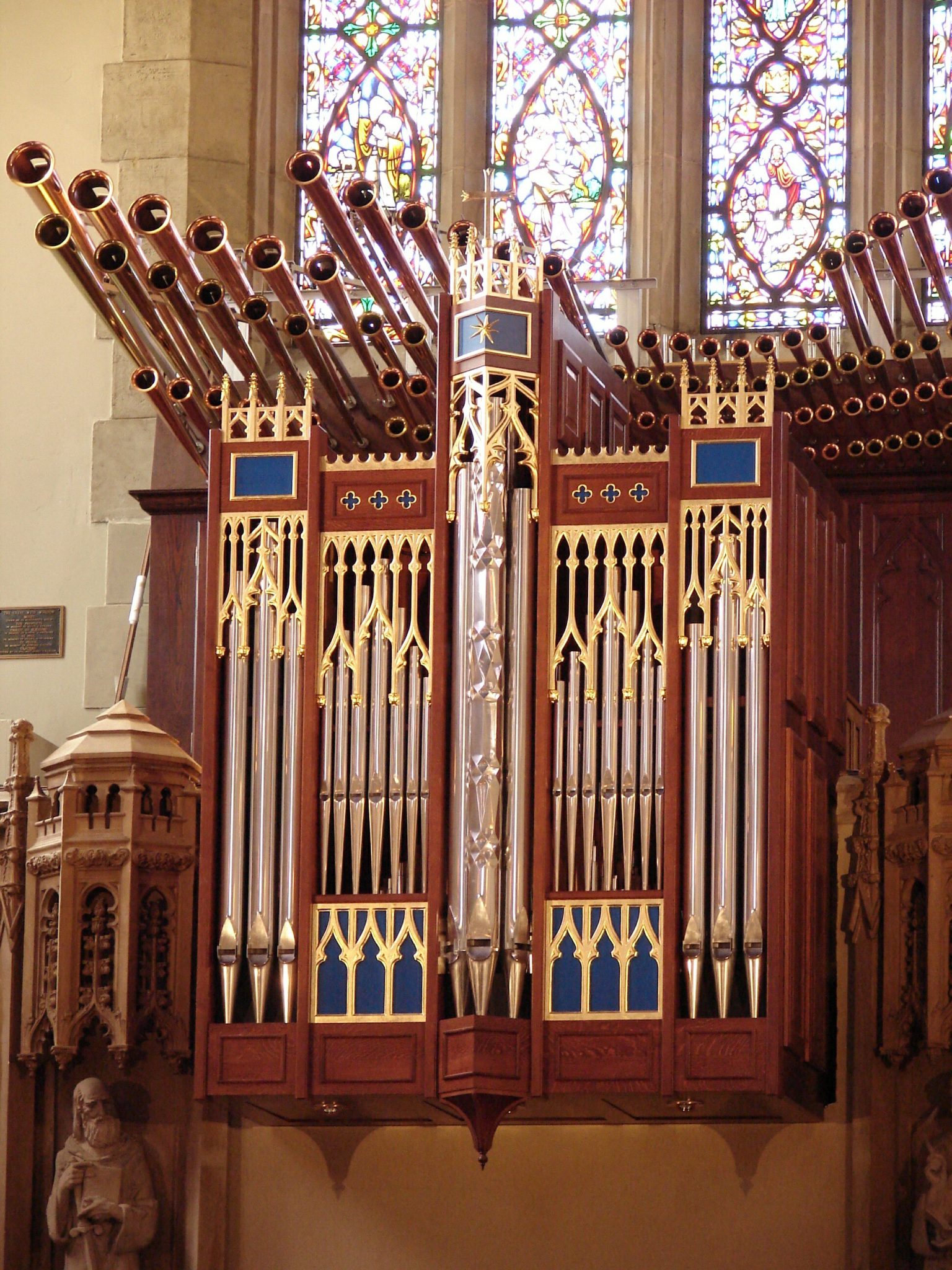
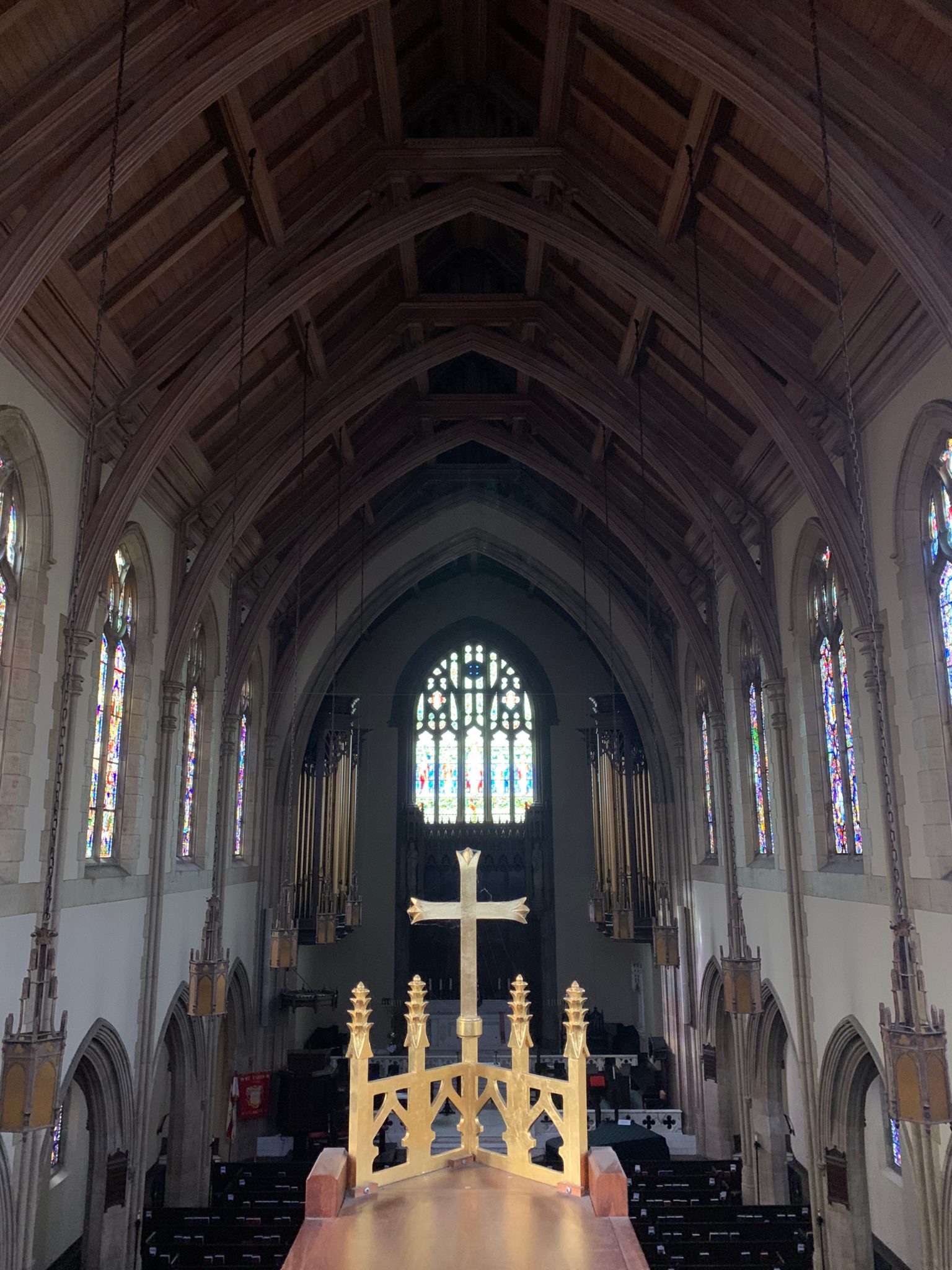
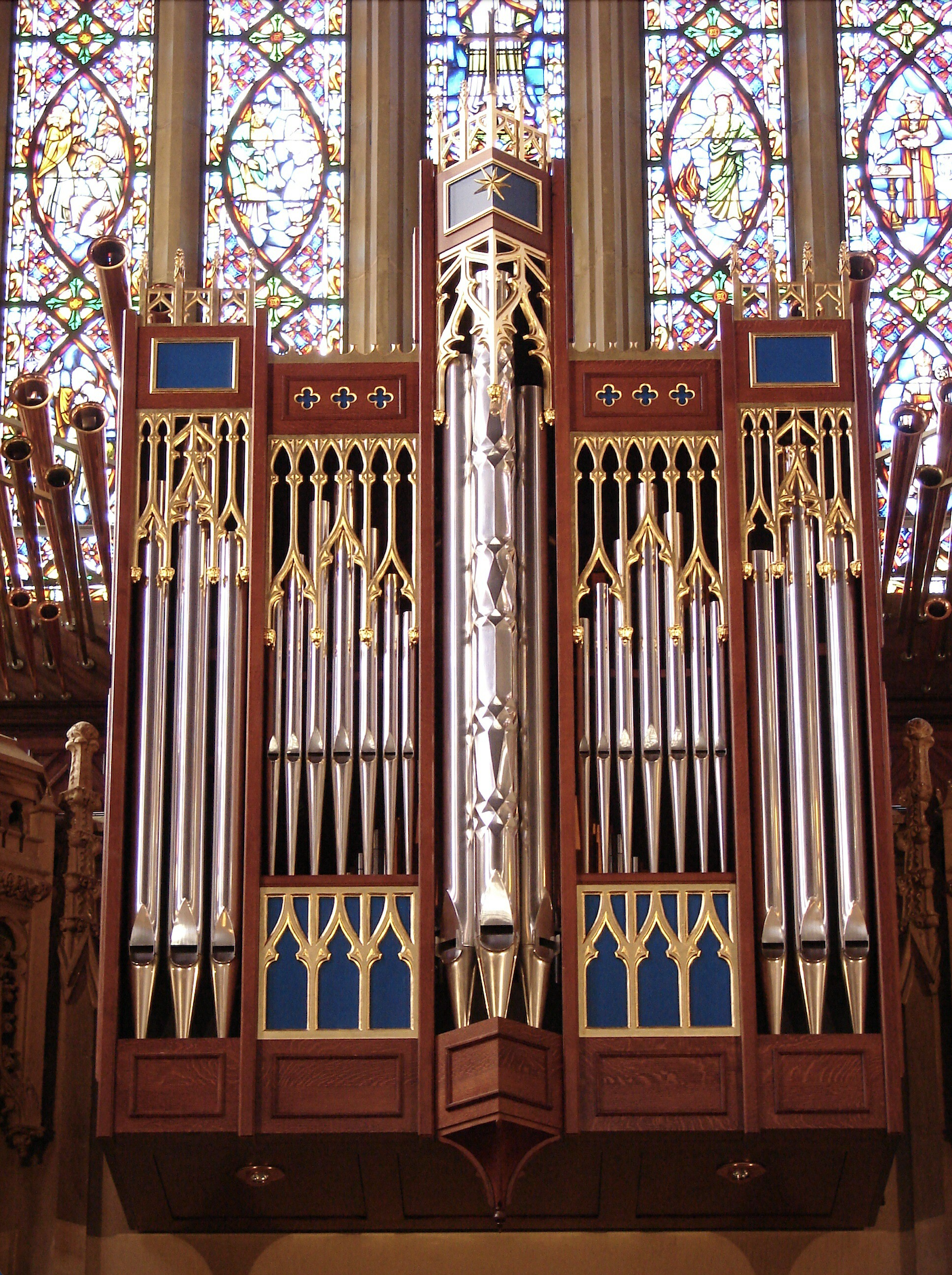
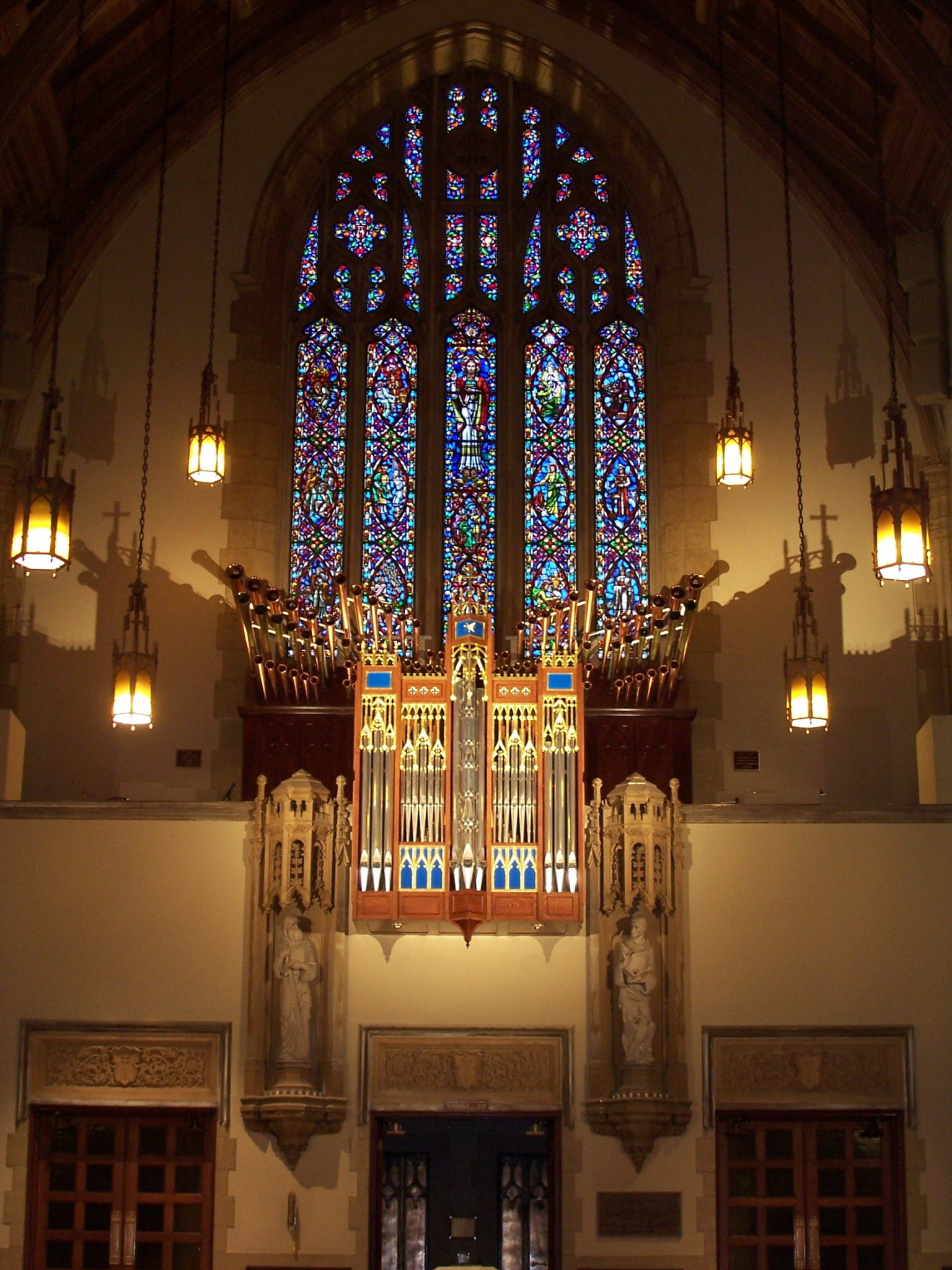
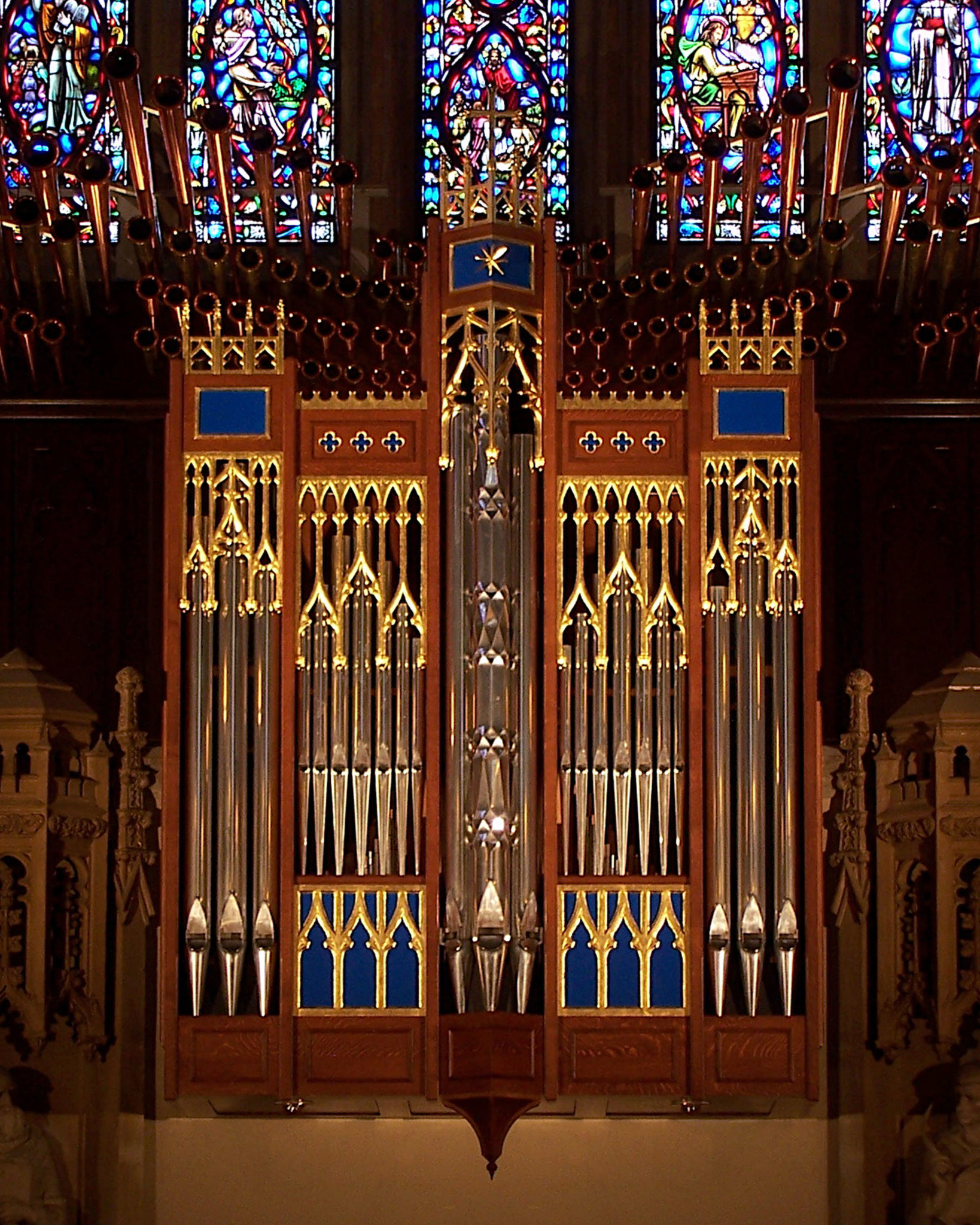
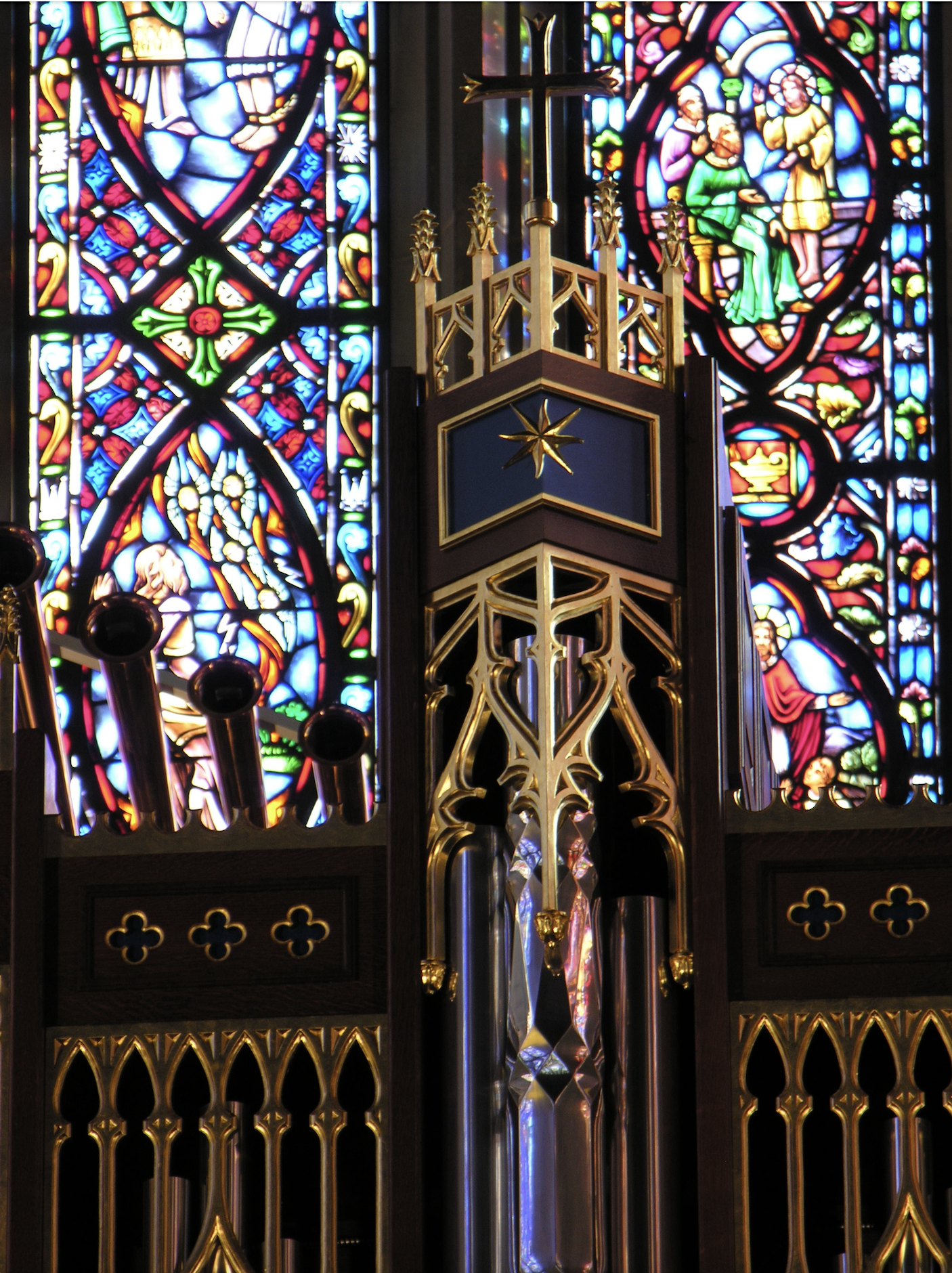
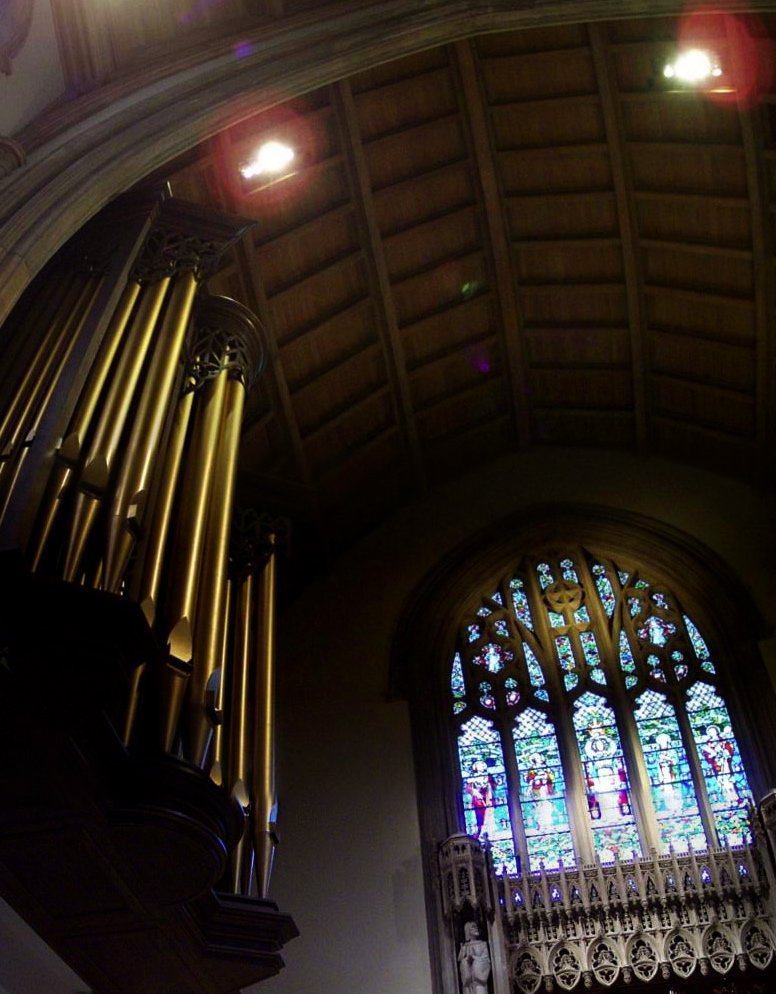
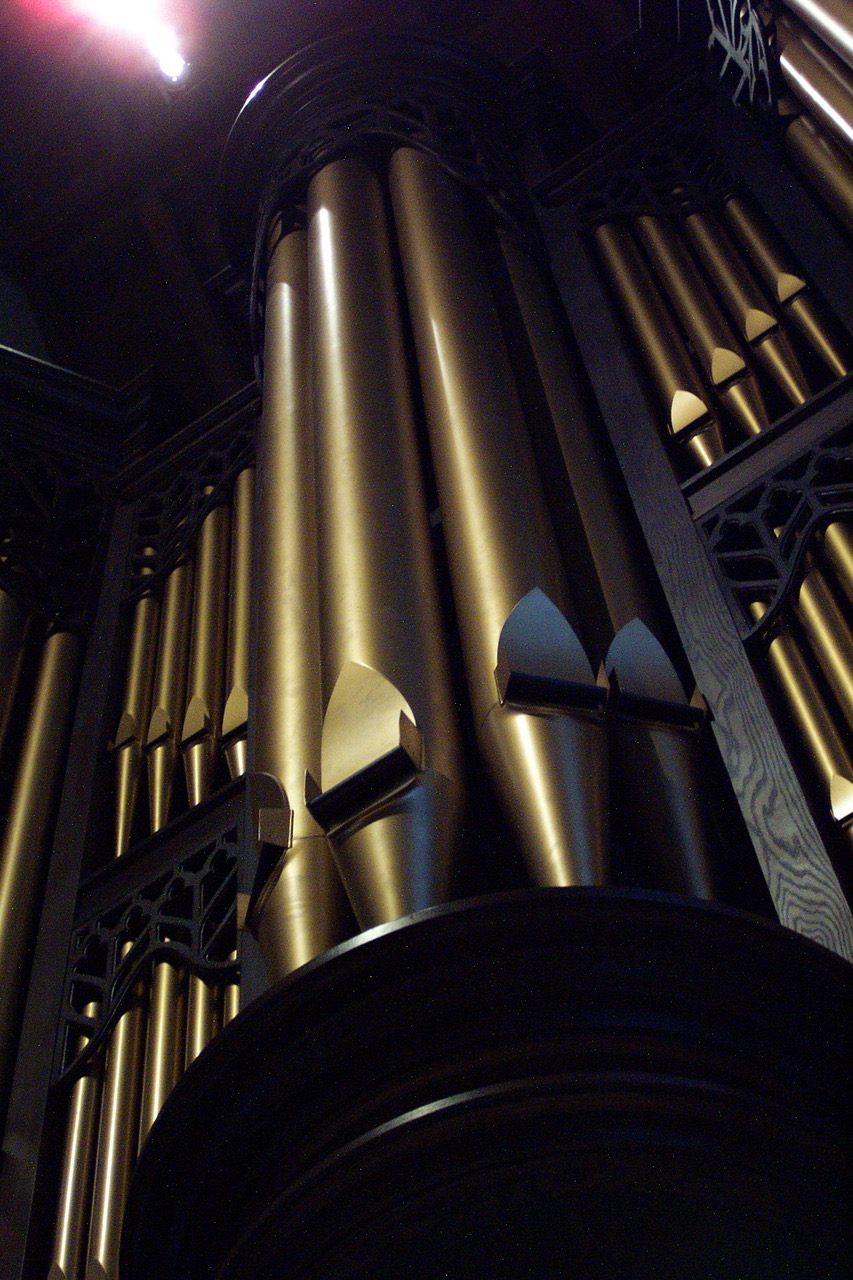
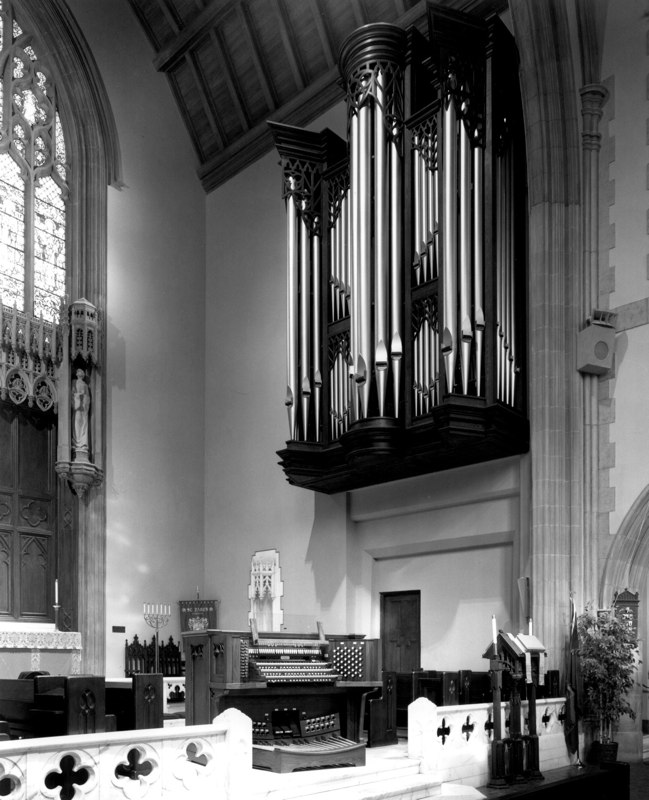

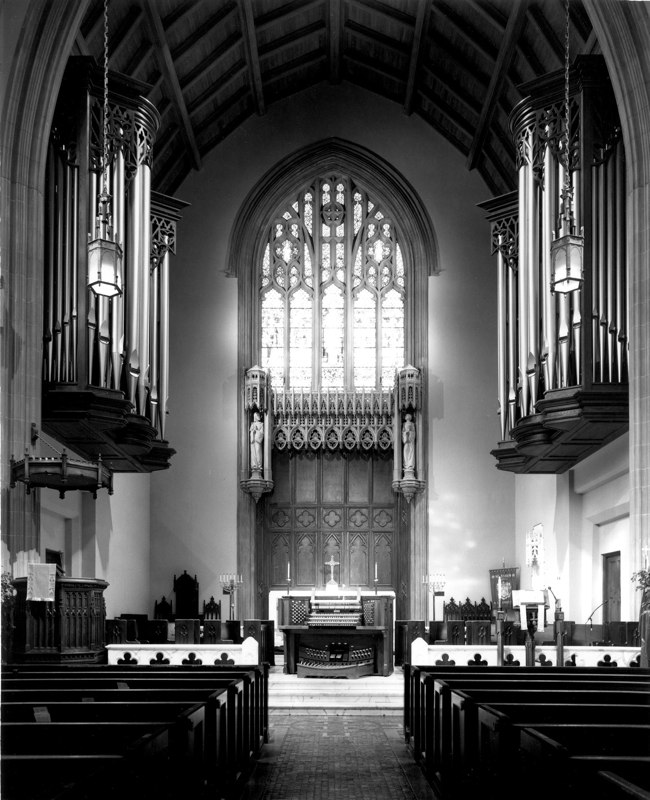
The Specifications of the David John Falconer Memorial Organ
GREAT
|
16′ |
Double Open Diapason |
|
|
8′ |
First Open Diapason |
|
|
8′ |
Second Open Diapason |
|
|
8′ |
Gross Flute |
|
|
8′ |
Gamba |
|
|
8′ |
Doppel Flute |
|
|
8′ |
Gemshorn |
|
|
4′ |
Octave |
|
|
4′ |
Harmonic Flute |
|
|
2 2/3′ |
Octave Quint |
|
|
2′ |
Super Octave |
|
|
III-IV |
Harmonic Mixture |
|
|
IV |
Mixture |
|
|
V |
Cornet |
|
|
16′ |
Double Trumpet |
|
|
8′ |
Trumpet |
|
|
4′ |
Clarion |
|
|
Tremolo |
||
|
8′ |
Harmonic Tuba |
|
|
8′ |
Solo Trumpet |
|
|
16′ |
Walcott Tromba* |
|
|
8′ |
Walcott Tromba* |
|
|
8′ |
Trompette des Anges* |
|
|
4′ |
Walcott Tromba* |
|
SWELL
|
16′ |
Bourdon |
|
|
8′ |
Open Diapason |
|
|
8′ |
Horn Diapason |
|
|
8′ |
Stopped Diapason |
|
|
8′ |
Salicional |
|
|
8′ |
Vox Celeste |
|
|
4′ |
Octave |
|
|
4′ |
Open Flute |
|
|
2 2/3′ |
Nazard |
|
|
2′ |
Flautina |
|
|
1 3/5′ |
Tierce |
|
|
III |
Dolce Cornet |
|
|
IV |
Mixture |
|
|
16′ |
Contra Fagotto |
|
|
8′ |
Trumpet |
|
|
8′ |
Oboe |
|
|
8′ |
Vox Humana |
|
|
4′ |
Clarion |
|
|
Tremolo |
||
|
16′ |
Walcott Tromba* |
|
|
8′ |
Walcott Tromba* |
|
|
8′ |
Trompette des Anges* |
|
CHOIR
|
16′ |
Double Dulciana |
|
|
8′ |
Open Diapason |
|
|
8′ |
Melodia |
|
|
8′ |
Dulciana |
|
|
8′ |
Unda Maris |
|
|
4′ |
Fugara |
|
|
4′ |
Harmonic Flute |
|
|
2′ |
Piccolo |
|
|
III |
Sharp Mixture |
|
|
8′ |
Orchestral Oboe |
|
|
8′ |
Clarinet |
|
|
Tremolo |
||
|
16′ |
Double Cornopean |
|
|
8′ |
Harmonic Tuba |
|
|
8′ |
Solo Trumpet |
|
|
8′ |
Cornopean |
|
|
16′ |
Walcott Tromba* |
|
|
8′ |
Walcott Tromba* |
|
|
8′ |
Trompette des Anges* |
|
|
4′ |
Walcott Tromba* |
|
ANTIPHONAL POSITIV
|
8′ |
Principal |
|
|
8′ |
Gedeckt |
|
|
4′ |
Octave |
|
|
4′ |
Spitzflute |
|
|
2′ |
Spitzflute |
|
|
Cymbalstar |
||
|
Tremolo |
||
ECHO
|
8′ |
Cor du Nuit |
|
8′ |
Viole Aetheria |
|
8′ |
Voix Celeste |
|
8′ |
Vox Humana & Tremolo |
PEDAL
|
32′ |
Bourdon |
|
|
32′ |
Lieblich Gedeckt |
|
|
16′ |
Open Diapason |
|
|
16′ |
Violone |
|
|
16′ |
Bourdon |
|
|
16′ |
Lieblich Gedeckt |
|
|
16′ |
Bourdon (Echo) |
|
|
8′ |
Octave |
|
|
8′ |
Flute |
|
|
8′ |
Violoncello |
|
|
4′ |
Super Octave |
|
|
VI |
Mixture |
|
|
32′ |
Bombarde |
|
|
16′ |
Trombone |
|
|
16′ |
Double Cornopean |
|
|
16′ |
Contra Fagotto |
|
|
8′ |
Tuba |
|
|
8′ |
Cornopean |
|
|
4′ |
Clarion |
|
|
16′ |
Walcott Tromba* |
|
|
8′ |
Walcott Tromba* |
|
|
8′ |
Trompette des Anges* |
|
|
4′ |
Walcott Tromba* |
|
|
Chimes |
||
|
Harp |
||
|
Cymbalstar (chancel) |
||
*en chamade
TWO NEW DIGITAL ORGANS
Blessed with a gift from the estate of Marti Haymaker and a gift from the estate of Douglas Duncan, St. James Church signed a contract in August of 2021 with Regent Classic Organs of Oxfordshire, England to build a custom digital organ specifically for the Resurrection Chapel. The organ arrived in November of 2022 accompanied by David Mason, President of Regent Organs, and colleague Richard Lowe to install and voice the instrument. It consists of one 61-note tracker-touch keyboard of plum naturals and ebony sharps and a 30-note flat and straight removable pedalboard. This versatile instrument, in the style of an enhanced “continuo organ,” is moveable and effective not only in the music of the baroque but of many periods beyond. The specifications follow:
Manual Stops
Bourdon 16
Principal 8 (divided bass/treble)
Stopped Diapason 8 (divided bass/treble)
Voce Umana 8 (divided bass/treble)
Krumhorn 8 (divided bass/treble)
Principal 4 (divided bass/treble)
Open flute 4 (divided bass/treble)
Nazard 2.2/3 (treble only)
Spitzflute 2 (divided bass/treble)
Mixture III
Pedal Stops
Bourdon 16
Principal 8
Flute 8
Principal 4
Krumhorn 8
Schalmei 4
Manual to pedal coupler.
Tremulant. Adjustable in depth and speed.
Tuning adjustable in increments of 0.13HZ with choices from 18 historic temperaments and the ability to create custom temperaments. Transposition between A=440 and A=415 adjusted separately.
Manuel split between bass/treble adjustable within a one octave range.
In addition to the chapel organ, an arrangement was reached with Regent Classic for the parish to receive on a complimentary 3-year loan a digital replica of an historic 1929 E. M. Skinner organ currently playing in St. Peter’s Church, Morristown, New Jersey. This instrument also arrived in November of 2022 and replaced the ailing Rodgers electronic organ previously used in our gallery. (The Rodgers was installed in 1992 when the old Kimball pipe organ in the chancel was removed to make room for the Murray Harris pipe organ installed 3 years later.) This custom replica features the latest technology exclusive to Regent Classic Organs and represents a significant upgrade from our Rodgers instrument. More information on this instrument , including its specifications, can be found online at the Regent website: https://regentclassicorgans.com/installations/skinner-style-organ.
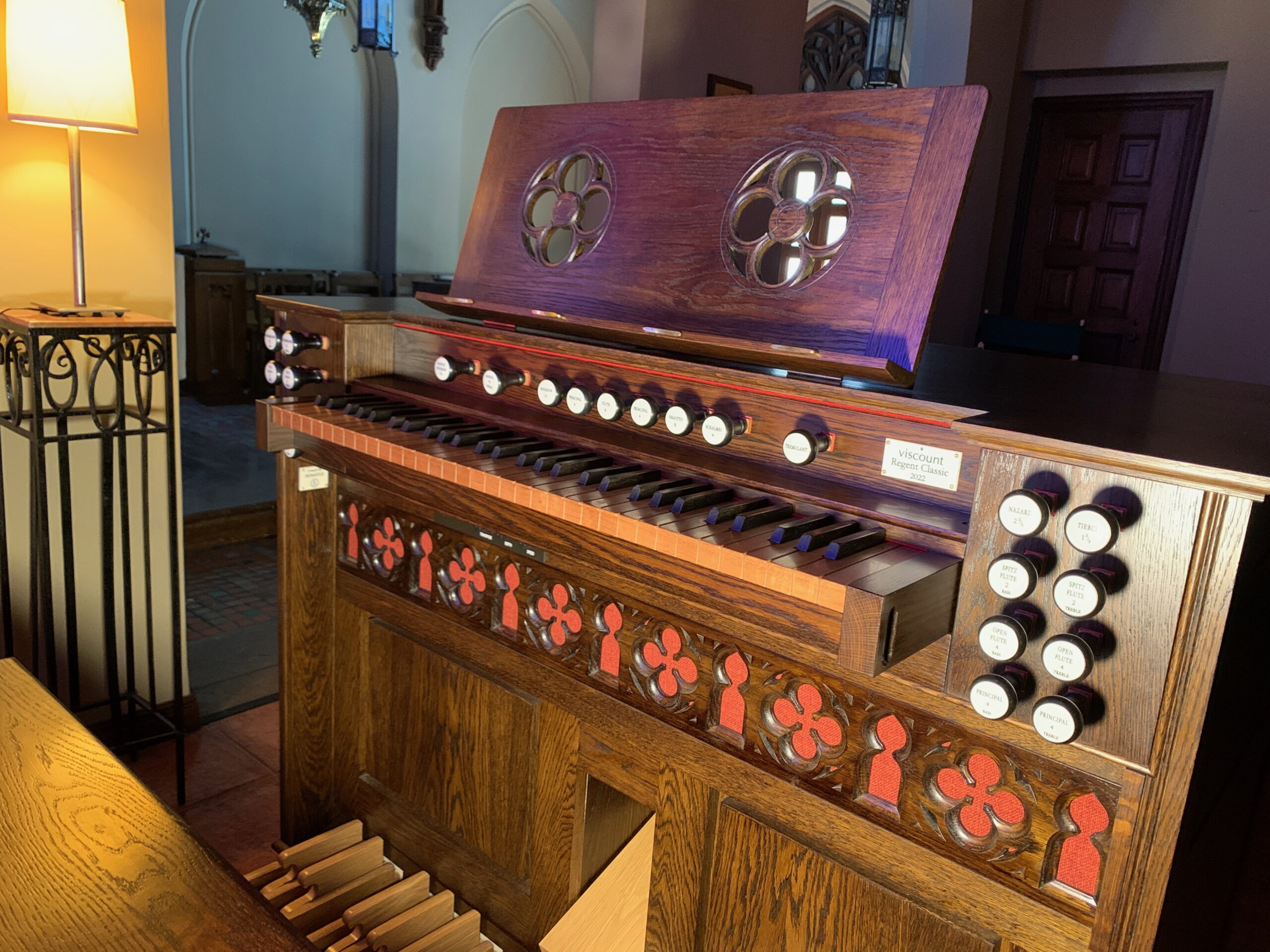
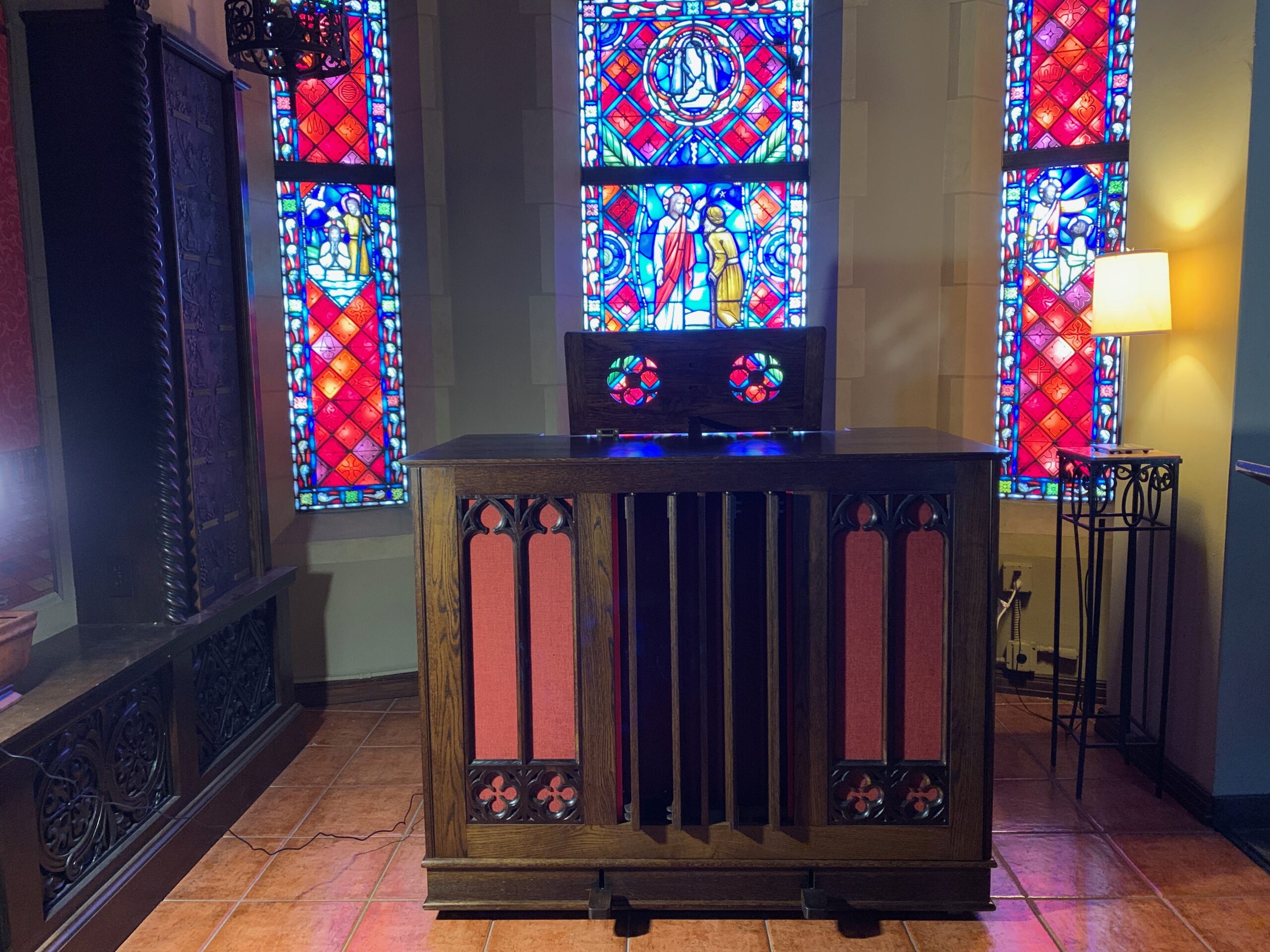
The Haymaker/Duncan Chapel Organ by Regent Classic Organs, 2022
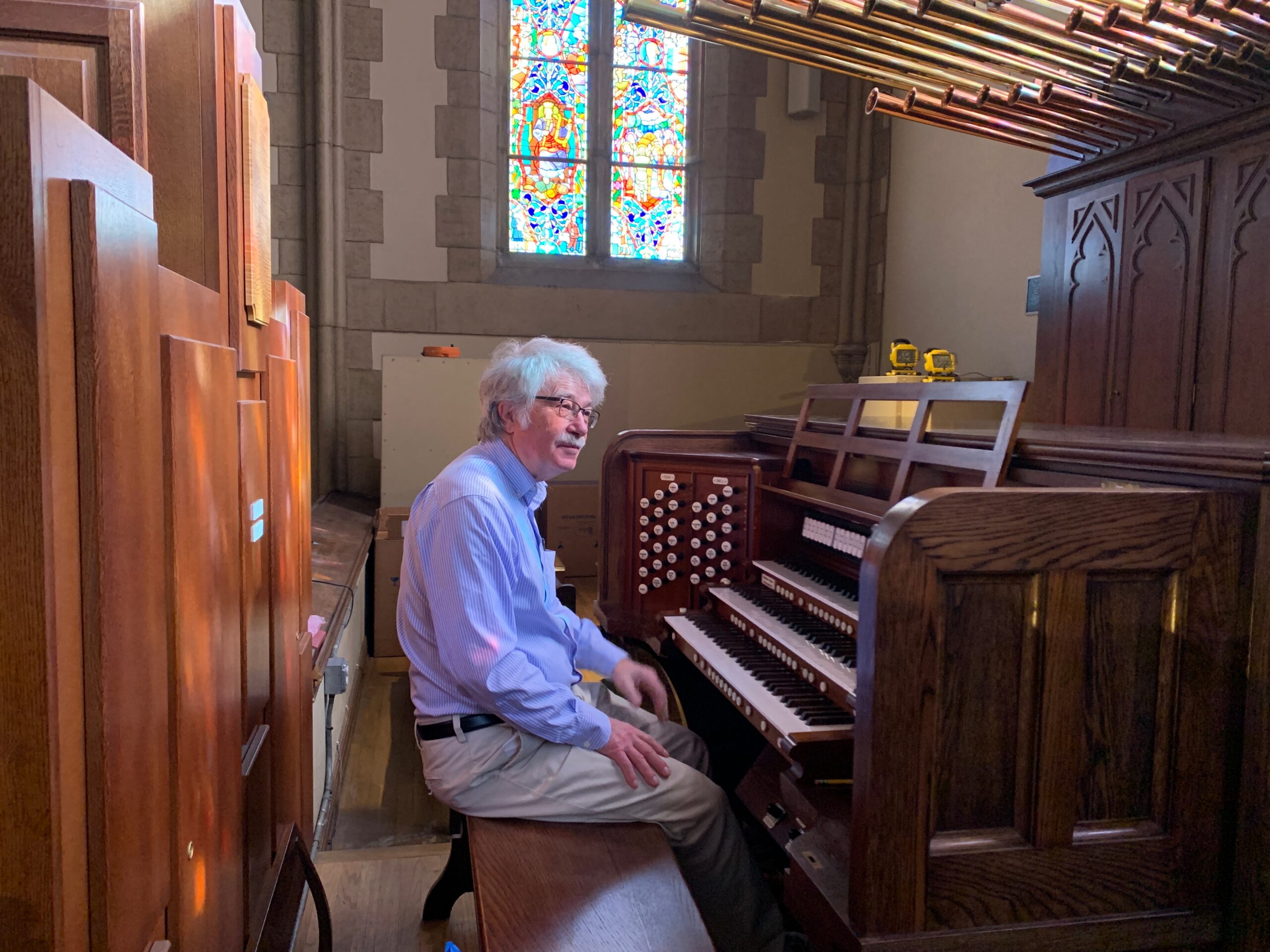
Regent Classic Organs President, David Mason, seated at the new “Skinner replica” organ in the gallery.
